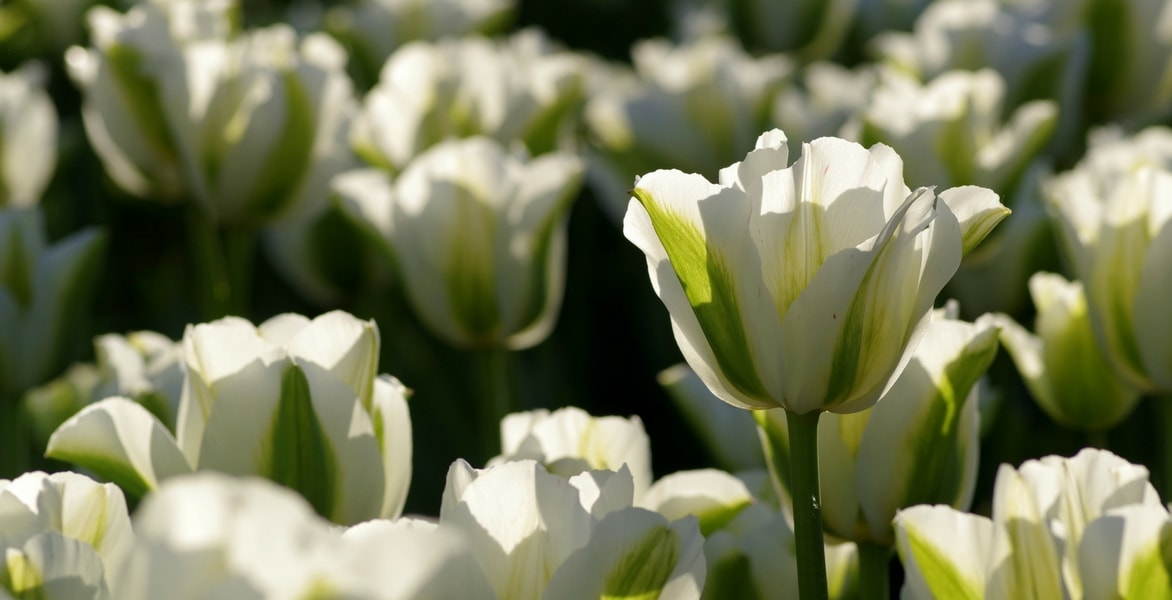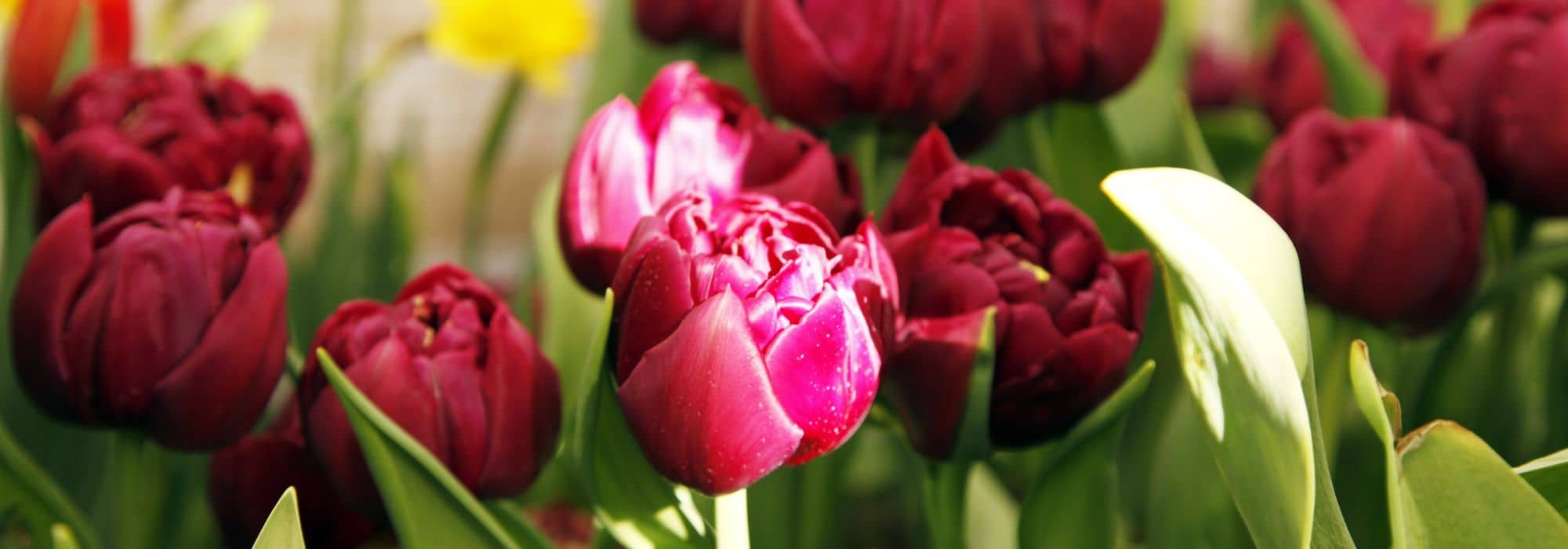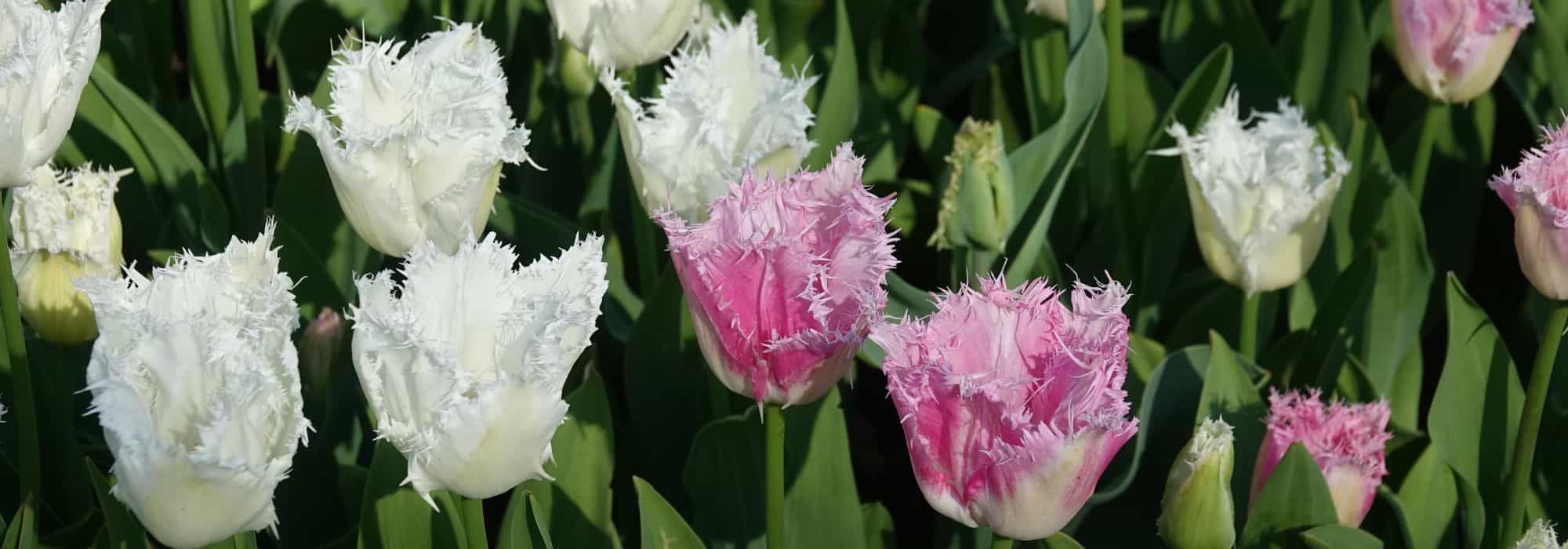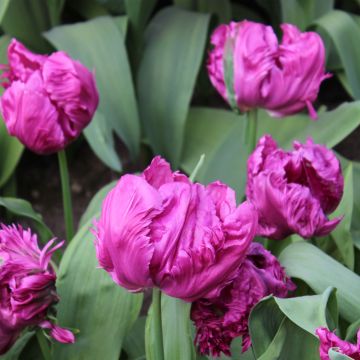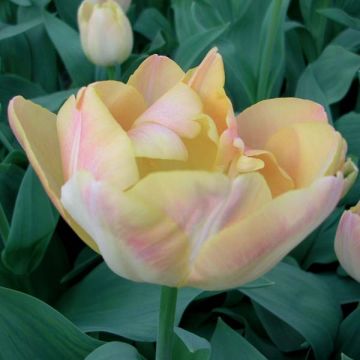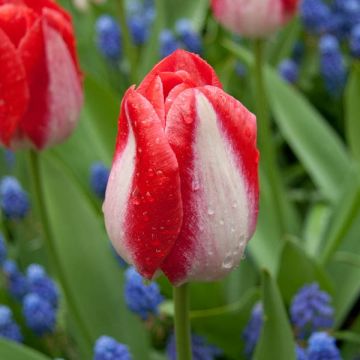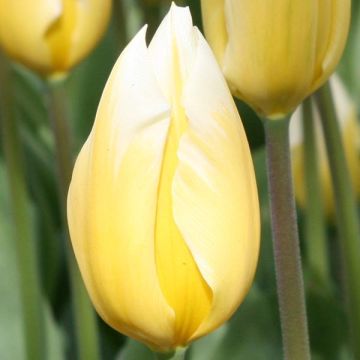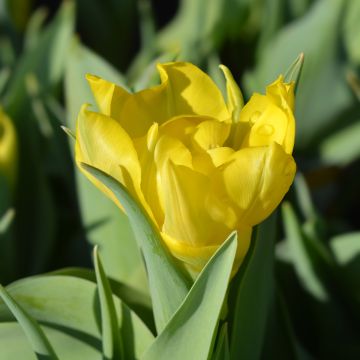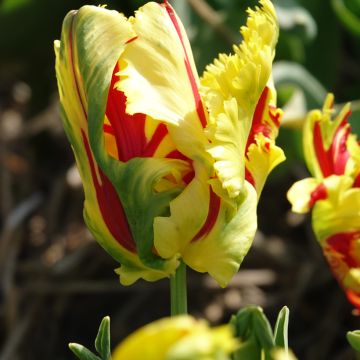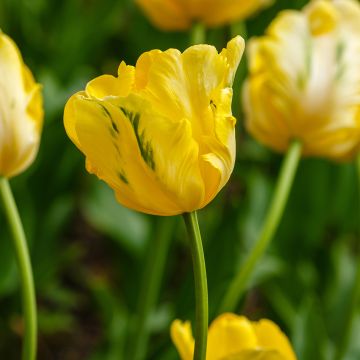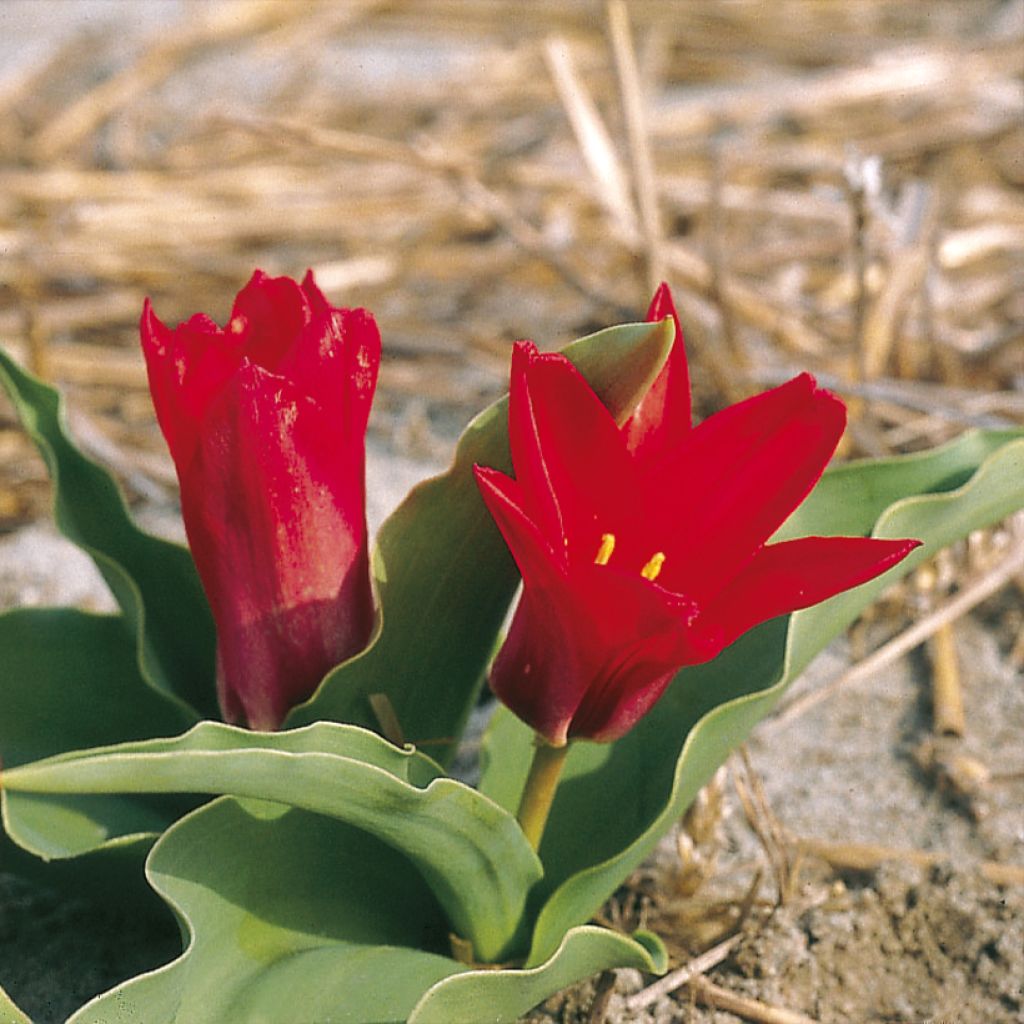

Tulipa kaufmanniana Pink Dwarf
Tulipa kaufmanniana Pink Dwarf
Tulipa kaufmanniana Pink Dwarf
Waterlily tulip
Special offer!
Receive a €20 voucher for any order over €90 (excluding delivery costs, credit notes, and plastic-free options)!
1- Add your favorite plants to your cart.
2- Once you have reached €90, confirm your order (you can even choose the delivery date!).
3- As soon as your order is shipped, you will receive an email containing your voucher code, valid for 3 months (90 days).
Your voucher is unique and can only be used once, for any order with a minimum value of €20, excluding delivery costs.
Can be combined with other current offers, non-divisible and non-refundable.
Home or relay delivery (depending on size and destination)
Schedule delivery date,
and select date in basket
This plant carries a 6 months recovery warranty
More information
We guarantee the quality of our plants for a full growing cycle, and will replace at our expense any plant that fails to recover under normal climatic and planting conditions.
Does this plant fit my garden?
Set up your Plantfit profile →
Description
The Tulipa kaufmanniana 'Pink Dwarf' is a horticultural selection of the Kaufmann's Tulip, a botanical species that grows in the wild. It is also known as the water lily tulip, due to its corolla that unfolds in the manner of this aquatic plant. This variety flowers early, producing elegant flowers with an intense pink colour, between cherry and raspberry, which perfectly complement the slightly greyish green foliage, providing them with a perfect setting. This hardy bulbous plant naturalises easily in the garden, and faithfully blooms year after year. It thrives in the sun and also tolerates light shade.
The Tulipa kaufmanniana is native to the mountains of Central Asia, where it forms colonies in rocky meadows in Kazakhstan. This species was first described by the German botanist Eduard von Regel in 1877. It belongs to the Liliaceae family, like the lily, lily of the valley, bluebell, and fritillary. This species has given rise to numerous cultivars and hybrids with vibrant colours, forming a distinct group within the Tulipa genus. Its bulb is round, covered with a brown tunic, and measures about 3 cm (1in) in diameter. In spring, the plant forms a small clump composed of 2 to 5 lanceolate leaves measuring 10 to 20 cm (4 to 8in) in length, with a slightly undulated edge. Occasionally folded into a gutter shape along the length, the leaves are uniformly green, without marbling like in some species of the group, but with a tint towards grey or bluish depending on sun exposure. The floral stem is short, 10 to 15 cm (4 to 6in) in height and sometimes bears a floral bud as early as the end of January . This bud will open in March to reveal a beautiful flower with a diameter of 5 to 7 cm (2 to 3in), with 6 petals (sepals and petals having almost the same morphology), upright and more or less spread out at their tips depending on the brightness. In full sun, the corolla opens even wider, resembling the flower of the water lily, which gives it its common name (water lily tulip). All bright and cheerful from the beginning of spring, this tulip displays an intense cherry pink colour tending towards raspberry pink, with a touch of yellow in its centre. The low sun in this season creates fascinating play of light by illuminating the corollas and brings joy to the garden.
Kaufmann's tulips are very hardy plants, tolerating temperatures as low as -20°C (-4°F), and can grow in most soils, as long as they are well-drained, as they do not tolerate excess water.
Kaufmann's tulips are suitable for sunny rockeries or at the base of deciduous trees and shrubs with late foliage, or with light foliage. Their low height allows them to withstand gusts of wind. Plant them in masses to enhance their flowering, by installing them in a meadow to create a colourful island. You will simply have to wait for the leaves to turn yellow before mowing. You can also plant them in containers, or in small groups in a rockery, alternating with yellow varieties like 'Goudstuck' to create cheerful contrasts in a still chilly season. You can create beautiful combinations with their cousins, the Bluebells, which often have blue flowers depending on the species. In milder climates, plant the bulbs in the ground under the Albizia julibrissin 'Summer Chocolate', a small silk tree with fabulous finely-cut purple foliage that provides light shade. Further north, a Forsythia 'Mélée d'Or' will create a bright yellow background against which your tulips will appear even more dazzling!
Plant habit
Flowering
Foliage
Safety measures
Botanical data
Tulipa
kaufmanniana
Pink Dwarf
Liliaceae
Waterlily tulip
Cultivar or hybrid
ingestion
Cette plante est toxique si elle est ingérée volontairement ou involontairement.
Ne la plantez pas là où de jeunes enfants peuvent évoluer, et lavez-vous les mains après l'avoir manipulée.
Pensez à conserver l'étiquette de la plante, à la photographier ou à noter son nom, afin de faciliter le travail des professionnels de santé.
Davantage d'informations sur https://plantes-risque.info
Planting and care
Plant your tulips as soon as possible in a well-drained soil. Loosen the soil deeply, incorporate coarse sand or gravel into the planting soil if necessary. Plant at a depth of 8 cm (3in) (Bulbs should be covered with twice their height of soil). Space the bulbs a few centimetres apart, making sure they do not touch. Choose a sunny exposure, at least until May, for better flowering. Kaufmann tulips go dormant in the summer in a dry soil, even shaded by deciduous trees or bushes. After flowering, cut the flower stems and allow the leaves to dry completely before cutting them.
Tips for flowering carpets: You can create beautiful flower spaces around the house, in flower beds, around trees, or in wild areas. It is an economical and sustainable solution, provided you follow a few principles:
1) This is a planting to be left in place.
2) Choose the varieties carefully according to the situation.
3) A resting period is essential after flowering for the bulbs to replenish themselves. Let the foliage turn yellow and dry before cutting it.
4) Organic fertiliser should be applied once a year in autumn.
Planting period
Intended location
Care
Planting & care advice
This item has not been reviewed yet - be the first to leave a review about it.
Similar products
Haven't found what you were looking for?
Hardiness is the lowest winter temperature a plant can endure without suffering serious damage or even dying. However, hardiness is affected by location (a sheltered area, such as a patio), protection (winter cover) and soil type (hardiness is improved by well-drained soil).

Photo Sharing Terms & Conditions
In order to encourage gardeners to interact and share their experiences, Promesse de fleurs offers various media enabling content to be uploaded onto its Site - in particular via the ‘Photo sharing’ module.
The User agrees to refrain from:
- Posting any content that is illegal, prejudicial, insulting, racist, inciteful to hatred, revisionist, contrary to public decency, that infringes on privacy or on the privacy rights of third parties, in particular the publicity rights of persons and goods, intellectual property rights, or the right to privacy.
- Submitting content on behalf of a third party;
- Impersonate the identity of a third party and/or publish any personal information about a third party;
In general, the User undertakes to refrain from any unethical behaviour.
All Content (in particular text, comments, files, images, photos, videos, creative works, etc.), which may be subject to property or intellectual property rights, image or other private rights, shall remain the property of the User, subject to the limited rights granted by the terms of the licence granted by Promesse de fleurs as stated below. Users are at liberty to publish or not to publish such Content on the Site, notably via the ‘Photo Sharing’ facility, and accept that this Content shall be made public and freely accessible, notably on the Internet.
Users further acknowledge, undertake to have ,and guarantee that they hold all necessary rights and permissions to publish such material on the Site, in particular with regard to the legislation in force pertaining to any privacy, property, intellectual property, image, or contractual rights, or rights of any other nature. By publishing such Content on the Site, Users acknowledge accepting full liability as publishers of the Content within the meaning of the law, and grant Promesse de fleurs, free of charge, an inclusive, worldwide licence for the said Content for the entire duration of its publication, including all reproduction, representation, up/downloading, displaying, performing, transmission, and storage rights.
Users also grant permission for their name to be linked to the Content and accept that this link may not always be made available.
By engaging in posting material, Users consent to their Content becoming automatically accessible on the Internet, in particular on other sites and/or blogs and/or web pages of the Promesse de fleurs site, including in particular social pages and the Promesse de fleurs catalogue.
Users may secure the removal of entrusted content free of charge by issuing a simple request via our contact form.
The flowering period indicated on our website applies to countries and regions located in USDA zone 8 (France, the United Kingdom, Ireland, the Netherlands, etc.)
It will vary according to where you live:
- In zones 9 to 10 (Italy, Spain, Greece, etc.), flowering will occur about 2 to 4 weeks earlier.
- In zones 6 to 7 (Germany, Poland, Slovenia, and lower mountainous regions), flowering will be delayed by 2 to 3 weeks.
- In zone 5 (Central Europe, Scandinavia), blooming will be delayed by 3 to 5 weeks.
In temperate climates, pruning of spring-flowering shrubs (forsythia, spireas, etc.) should be done just after flowering.
Pruning of summer-flowering shrubs (Indian Lilac, Perovskia, etc.) can be done in winter or spring.
In cold regions as well as with frost-sensitive plants, avoid pruning too early when severe frosts may still occur.
The planting period indicated on our website applies to countries and regions located in USDA zone 8 (France, United Kingdom, Ireland, Netherlands).
It will vary according to where you live:
- In Mediterranean zones (Marseille, Madrid, Milan, etc.), autumn and winter are the best planting periods.
- In continental zones (Strasbourg, Munich, Vienna, etc.), delay planting by 2 to 3 weeks in spring and bring it forward by 2 to 4 weeks in autumn.
- In mountainous regions (the Alps, Pyrenees, Carpathians, etc.), it is best to plant in late spring (May-June) or late summer (August-September).
The harvesting period indicated on our website applies to countries and regions in USDA zone 8 (France, England, Ireland, the Netherlands).
In colder areas (Scandinavia, Poland, Austria...) fruit and vegetable harvests are likely to be delayed by 3-4 weeks.
In warmer areas (Italy, Spain, Greece, etc.), harvesting will probably take place earlier, depending on weather conditions.
The sowing periods indicated on our website apply to countries and regions within USDA Zone 8 (France, UK, Ireland, Netherlands).
In colder areas (Scandinavia, Poland, Austria...), delay any outdoor sowing by 3-4 weeks, or sow under glass.
In warmer climes (Italy, Spain, Greece, etc.), bring outdoor sowing forward by a few weeks.



































